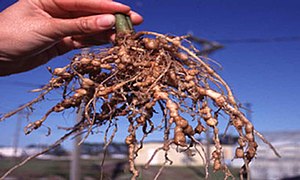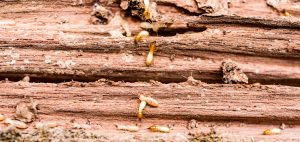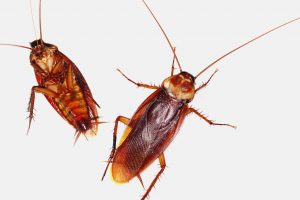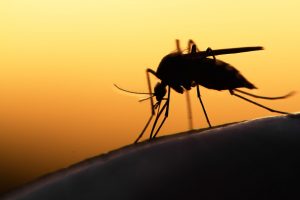
Root-knot nematodes live within soil and feed off the roots of plants such as okra, tomatoes, peppers, corn, and peas, extracting the water and nutrients from the roots in order to survive. These tiny worm-like insects receive their name from the knot-like structures they form in the roots of plants. They thrive in sandy soil, which is common in many regions of the southern United States. Yellowing leaves, stunted growth, and less-than-normal fruit production are all symptoms of root-knot nematode infestation.
Female root-knot nematodes can lay up to 500 eggs at a time, making these pests somewhat hard to control if measures are not taken early. Infected plants often have roots that contain galls, or swollen and knot-like formations on the root. If you suspect that your garden has been infested with nematodes, dig up a potentially infected plant and examine the roots for any galls. If you discover roots that are knotted and also appear slightly or fully rotted, then it may be a sign that root-knot nematodes are present within the soil. Pesticide control can be quite tricky, but not impossible. Some of the most effective control methods, however, deal with prevention and crop rotation.
Management
One of the most widely-used root-knot nematode control methods is prevention, which may include growing resistant varieties of common garden plants. Some garden centers sell vegetables, flowers, and fruit plants that are resistant to nematodes. These are the best types of plants to grow in gardens in which nematodes are plentiful. To indicate that a variety of plant is resistant, nurseries frequently tag plants as ‘VFN’, which stand for “verticillium and fusarium wilt resistant and nematode resistant.” Many of these plants have been engineered to contain nematode resistant genes. It should be noted that this gene appears to be less effective in hot climates. Unfortunately, root-knot nematodes are more active in warmer conditions. Therefore, many gardeners recommend planting these resistant varieties earlier in the season, before temperatures rise.
Rotating crops each year also lessens nematode populations. Root-knot nematodes feed on weeds, so proper weeding and tilling of the soil is important. Since root-knot nematodes can reduce the amount of water a plant is receiving, make sure your vegetation receives an adequate water supply, especially in the hot months. Some pest control services may be able to help reduce nematode populations through various pesticides (or nematocides). If you discover root-knot nematodes in your garden, or if an already-present population of nematodes begins to grow out of hand, speak to a professional in order to determine the appropriate actions for successful control.





